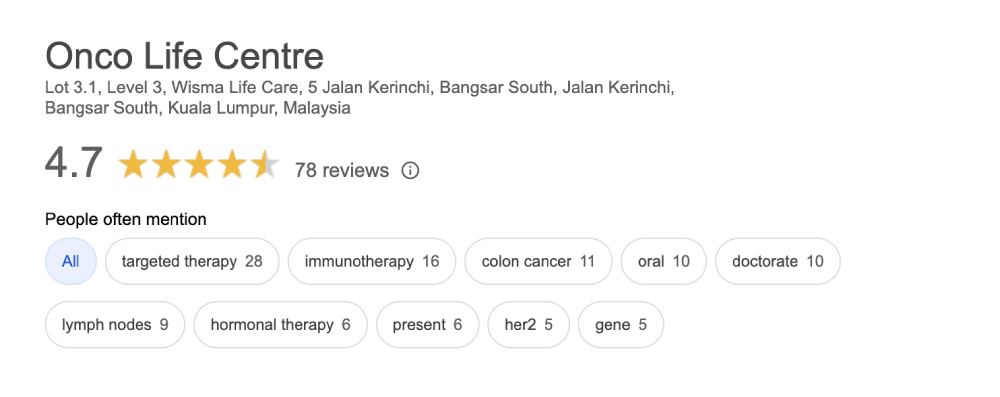





Primary brain cancer that starts in the brain is often described as low or high grade. A higher grade is usually more aggressive and more likely to grow quickly. Primary brain tumors are divided into glioma and non-glioma tumor types.
Gliomas arise from brain glial cells and can be categorized as astrocytoma, oligodendroglioma, or ependymoma. Non-glioma tumors arise from non-glial cells and can be categorised as meningioma, pineal and pituitary gland tumours, primary CNS lymphomas, medulloblastoma, craniopharyngioma and schwannoma.
Secondary brain cancer or brain metastases are more common than primary tumors. Secondary brain cancers originate from another part of the body such as the breast, lung, kidney, colon, skin and spreads to the brain.
If cancer spreads to the meninges and the cerebrospinal fluid (CSF), it is called leptomeningeal metastases.
Imaging tests can determine if the tumor is a primary or secondary brain tumor.
Magnetic resonance imaging (MRI): The MRI may be of the brain and/or spinal cord, depending on the likelihood that it will spread in the CNS.
Tissue sampling/biopsy of tumor: A sample of the tumor’s tissue is usually needed to make a final and definitive diagnosis.
CT scan: A CT scan identifies bleeding and enlargement of the fluid-filled spaces in the brain, called ventricles. Changes to bone in the skull as well as tumor size can also be seen on a CT scan.
Positron emission tomography (PET): A PET scan is used at first to find out more about a tumor while a patient is receiving treatment. It may also be used if the tumor comes back after treatment.
Biomarker testing of the tumor: This may also be called molecular testing of the tumor. Results of these tests will determine your treatment options.
In addition to standard chemotherapy, targeted therapy targets the tumor’s specific genes, proteins, or the tissue environment that contributes to a tumor’s growth and survival. Read More ...
Surgery is the removal of the tumor and some surrounding healthy tissue during an operation. It is often the only treatment needed for a low-grade brain tumor. Removing the tumor can improve neurological symptoms; provide tissue for diagnosis and genetic analysis.
Immunotherapy for brain cancer utilises an individual’s own immune system to help kill off the cancer cells. There are currently several FDA-approved immunotherapy options for brain cancer. Immunotherapy is now a promising option in treating brain cancer.
For people with grade II or III oligodendroglioma with a 1p/19q co-deletion and an IDH genetic mutation, ASCO recommends radiation therapy in combination with the chemotherapy drugs, which together are called PCV.
ASCO recommends that people with grade II astrocytoma with an IDH genetic mutation and no 1p/19q co-deletion be offered radiation therapy followed by chemotherapy with either oral chemotherapy or PCV. People with grade III astrocytoma with an IDH genetic mutation and no 1p/19q co-deletion should be offered radiation therapy followed by oral chemotherapy or both of these treatments given at the same time. Likewise, people with grade IV astrocytoma with an IDH genetic mutation may be offered radiation therapy followed by oral chemotherapy or both of these treatments given at the same time. Some astrocytomas without an IDH mutation may be treated the same way as grade 4 glioblastoma that also does not have an IDH mutation.
For most people with newly diagnosed grade IV glioblastoma or a grade II or III astrocytoma and no IDH genetic mutation, ASCO recommends treatment with radiation therapy and oral chemotherapy given at the same time. After this treatment, 6 months of oral chemotherapy is recommended.
Onco Life Centre combines key elements of brain cancer care and brain cancer treatment under one roof, with convenience and speed. At Onco Life Centre, we have the necessary medical disciplines to achieve this. Our board certified highly experienced consultant oncologists have earned recognition for excellence in the field of brain cancer treatment, providing our patients with the most advanced brain cancer treatment options.

Dr. Christina Ng is a Consultant Medical Oncologist and Founder President of Empowered, The Cancer Advocacy Society of Malaysia.…
Treatment cost for brain cancer depends on several factors, such as the type of the brain cancer. Generally, using only chemotherapy is cheaper compared to using targeted therapy or immunotherapy. The more advanced the cancer stage, the more expensive it becomes to treat the cancer. At Onco Life Centre, the cost for treating brain cancer using chemotherapy for most of our patients is around MYR500 to MYR1,000 per cycle. The cost of brain cancer targeted therapy is from MYR4,000. Average cost of immunotherapy can range from MYR10,000 depending on the specific type and dosage of immunotherapy drug used.
Patients and their families have opportunities to talk about the way they are feeling with our oncologists, nurses, counselors, or join our psychosocial program and support group at Onco Life Centre.

